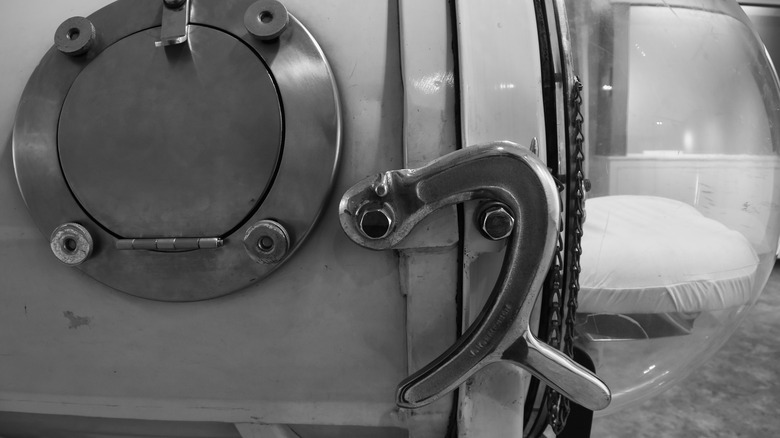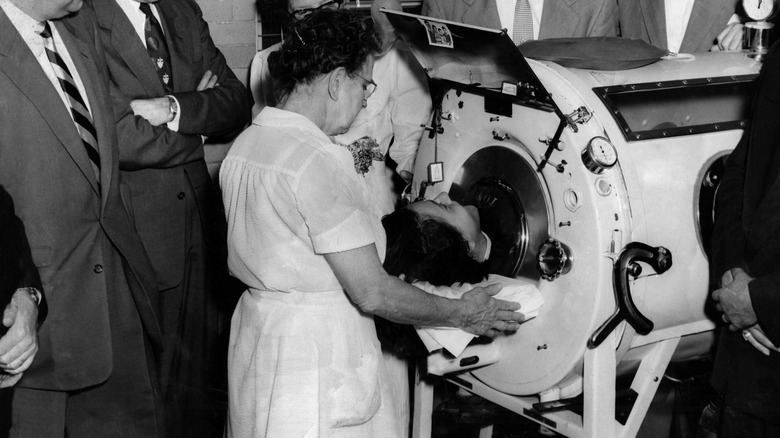Here's What It Takes To Keep An Iron Lung In Working Condition
For decades, polio was one of the most feared childhood diseases in the world, even in a wealthy, developed, First-World nation like the United States, with its world-class medical infrastructure. Prior to the development of the polio vaccine, according to the Centers for Disease Control, more than 16,000 cases of paralytic polio were diagnosed annually (1951-54) in the United States, with an additional 1,800 deaths. Those who survived were often faced with a lifetime of disability — the ability to walk was often significantly impaired as a result. Another lifetime of disability had a very real and very striking visual component to it: the so-called iron lung. The machine was developed to help polio survivors, their respiratory systems weakened by the disease, to survive by manipulating the air pressure around them to help them to breathe, as Newsweek reports.
The pathogen that causes polio has been all but eradicated in the West, and the iron lung is a relic of the past. However, at least one American, who was sickened as a little girl by the disease, still uses one at night. And she's now faced with trying to determine how she can live the rest of her life relying on a bit of 1950s technology with no technicians to maintain it, and no manufacturer making the requisite parts.
Martha Lillard still uses an iron lung
Back in 1953, as NPR News reports, Martha Lillard contracted polio while celebrating her fifth birthday. She survived the illness, but she did not survive the fate that befell countless other polio victims: she would require an iron lung to help her breathe. That was seven decades ago, and to this day, Lillard says that the vintage machine helps her breathe far better than more modern respiratory therapies.
It's come at a cost. The days of manufacturing of iron lungs has long since come and gone, and with it, the availability of technicians who service the machines. Lillard remembers one incident when a technician came to service her machine, took it apart, and then prepared to leave without putting it back together.
Parts are an issue, too. The machine's belts need to be replaced every few weeks, and no one is manufacturing them any more. The inside cot only lasts six months, and the machine's motor needs to be replaced every 12 years. Meanwhile, Lillard's most pressing need is for collars. The lifesaving devices make a tight seal around her neck in order to maintain the right pressure differential, and she's down to her last few, and hoping against hope she can find someone to manufacture some for her. "When they start deteriorating, it gets harder and harder to breathe as they leak more," she said.

